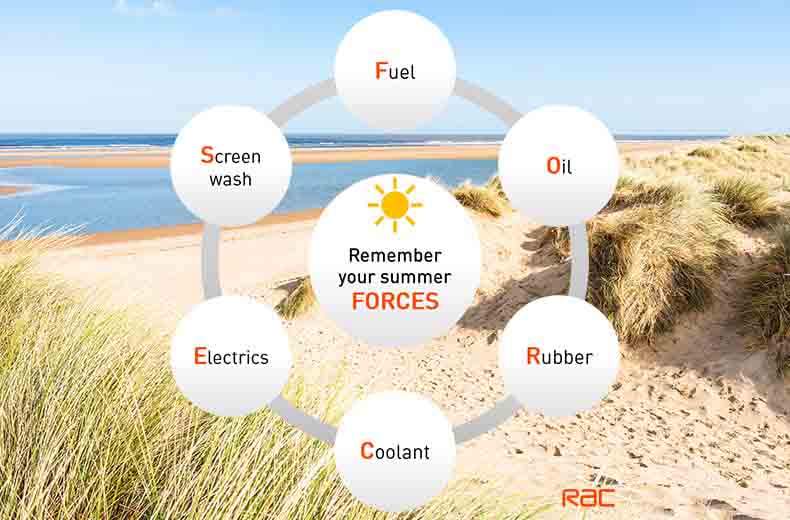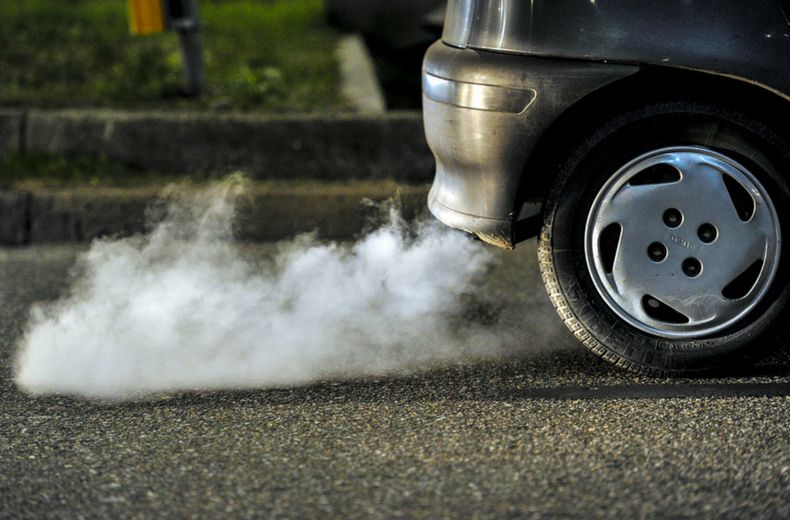Cars largely cope fine, thanks to decades of design evolution. However, they do still have some surprising tricks that only come out in the summer months – and if you're not fully aware of them, these can be alarming.
Here, we outline five eye-opening things you may find your car doing in the summer... and also explain why they happen, to put your mind at rest.
Are you experiencing a car fault, warning, or mechanical problem on your road trip? Find a local mechanic with the RAC.
Car dripping water / liquid
Many people are alarmed to see pools of water form beneath their car when they park up. It can also sometimes be possible to see water dripping from cars on the move, too.
This is caused by the air conditioning system. It is condensed water dripping from the evaporator and it is designed to be released in this way. Air conditioning does not only cool water, but dehumidifies it... and that water has to go somewhere!
Noticing a liquid of a different colour? You might want to check your motor in with your nearest RAC Approved garage.
Smoke from the air vents
Plumes of white smoke coming from the air vents when you turn on the car is extremely alarming. However, it is nothing to worry about (unless the smoke is acrid). It is caused by the car's air conditioning unit battling agains the hot weather.
The smoke is water vapour from the hot humid air. Passing it too quickly through the air conditioning system will not give the condensing moisture time to form into water droplets. It instead carries on straight through the system to cause the 'smoke'. Running the system for a while will stop it.
We're got a full guide on what to do when your car is smoking which covers everything from colour to location, so check that out if you're worried.
- Engine smoking – why is it happening and what should I do next?
- What do I do if my car is overheating?
- Air-con regassing: everything you need to know
- Windscreen repair
Loud noises from the engine bay
In slow traffic, it can be alarming to hear a rushing, roaring noise coming from the engine bay. This often comes and goes, but stops again when you are on the move.
The noise is the engine cooling fan cutting in and out. To save fuel, this does not run all the time, but kicks in when the engine water temperature rises too high. Once you are moving again, the flow of air through the radiator grille will ensure it is not needed.

RAC sale – up to 33% off*
• Roadside cover from £5.29 a month†
• We get to most breakdowns in 60 mins or less
• Our patrols fix 4/5 breakdowns on the spot

Car becomes sticky
If you park under a tree in the summer, you may not notice the effects until you run your hand over the paintwork – then you'll discover sap from the tree has collected in tiny sticky droplets all over your car.
If it is left, the sap will harden and can cause paint damage: it is best removed with lots of water and a hot, soapy shampoo solution. It also covers windscreens too: this is why you need a good summer solution fluid in the windscreen washer bottle (and plenty of it).
The best course of action is the clean your car regularly, but check out our guide on how to remove scratches from your paintwork if you do notice any damage.
Car becomes slower
Sensitive drivers may notice their car feels more lethargic in the summer months, particularly if the engine is smaller and less powerful. Acceleration can seem slower and response not quite as crisp as in the winter.
This is because hot summer air is less dense (the mass of air divided by its volume), and so creates a smaller 'bang for your buck'. The difference isn't great but it does knock a little off engine performance, and can also affect fuel economy too. The flipside is, engines will perform better on cool, crisp mornings!
Remember your car checks with Summer FORCES

Remember the acronym 'FORCES' and you'll go a long way to ensuring your car is ready for any long drive.
F is for FUEL
Ensure you have enough fuel for your journey. Cars use more fuel in heavy traffic and start/stop conditions which can be regular occurrences, especially in warm weather.
O is for OIL
To avoid engine damage and a potential breakdown, remember to check your oil level and top up when necessary to reduce the chances of overheating in traffic.
R is for RUBBER
Your tyres can tell you a lot about how your car is performing. If they aren’t wearing evenly, then tyre pressures may be mismatched or there could be a fault with the steering.
Check that all four tyres have at least 3mm of tread and are inflated to the correct pressure - this is vital to maintaining good grip in wet and even icy conditions. For everything you need to know about how to check your tyres you can read our how to check your tyres advice complete with short video.
Also take a look at your wiper blades to ensure they're clearing the screen effectively and that the rubber has not perished.
C is for COOLANT
This does a vital job in ensuring the engine runs at the right temperature. If it’s not between the ‘min’ and ‘max’ levels, this could be the sign of a problem so contact a good garage without delay.
E is for ELECTRICS
Your wipers will help keep your windscreen clear of bugs, and you’ll need your lights on during any heavy downpours. The electrics also control your indicators and windows, so check there are no problems.
S is for SCREENWASH
Top-up your windscreen washer fluid by using a good quality screenwash, nobody wants bugs and seagull poo all over their windscreen after a trip to the beach.

RAC sale – up to 33% off*
• Roadside cover from £5.29 a month†
• We get to most breakdowns in 60 mins or less
• Our patrols fix 4/5 breakdowns on the spot















